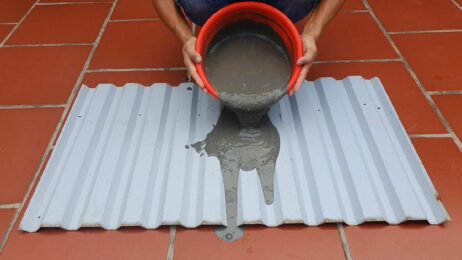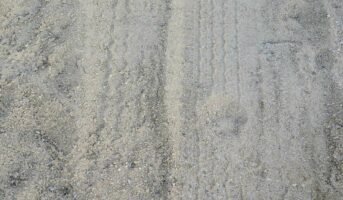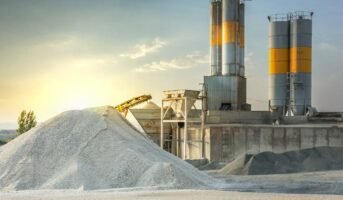Cement is an essential building material that is widely used in the construction industry. It is a versatile and durable material that forms the foundation for many modern buildings and infrastructure projects. Cement is a fine powder that is made from a mixture of minerals, primarily limestone, clay, and other materials, which are processed into a powder, and then mixed with water to create a binding agent that holds various construction materials together.
Cement has been used in construction for thousands of years and has been developed and improved over time to meet the changing needs of the construction industry. Today, cement is a critical component of almost all modern construction projects, including buildings, roads, bridges, dams, and many other structures.
The production and use of cement have significant environmental and social implications, as the cement industry is one of the largest producers of greenhouse gas emissions worldwide. As such, there is a growing focus on finding ways to make cement production more sustainable and environmentally friendly.
What does cement contain?
The two main types of ingredients that make up cement are calcareous compounds like lime, chalk, and marine shells, which are high in calcium, and argillaceous compounds like clay, marl, and shale, which are high in silica. Hence, lime (obtained from calcareous compounds) and silica (obtained from argillaceous compounds), which make up a large amount of cement’s body, are their two basic constituents. Alumina, calcium sulphate, iron oxide, magnesia
See also know about: Density Of Sand
Components of cement
Following are the primary components of cement.
Lime (62% – 67%)
When present in excess, it renders cement unsound and causes it to expand and dissolve. It gives cement strength and soundness. In contrast, if there is a shortage, the strength given is modest and the cement sets up rapidly.
Silica (17% – 25%)
Similar to how lime gives cement strength, silica does the same. The strength of cement grows along with the silica content while the setting time of cement reduces. Hence, silica and lime percentages must be adjusted when cement with an early setting is required.
Alumina (3% – 8% )
Alumina is used to give cement a quick-setting quality. Moreover, it functions as a flux to lower the clinker temperature during cement preparation. If there is too much alumina present, cement loses strength as well.
Calcium Sulphate (3% – 4% )
Gypsum (CaSO4.2H2O), which is calcium sulphate, is a component of cement. It aids in extending the cement’s initial setting time so that it can continue to be usable for longer.
Iron Oxide (3% – 4% )
It gives cement three crucial qualities, namely strength, hardness, and colour.
Magnesia (1% – 3% )
Magnesia, like iron oxide, gives cement its strength, hardness, and colour, but too much of it can make cement unstable.
Sulphur (1% – 3% )
The cement’s volume variations are caused by sulphur. A relatively tiny quantity of sulphur makes cement sound, whereas an abundance causes cement to be unsound.
Alkalies (0.3% – 1% )
Alkalies are to blame for the staining of cement or the white efflorescence of the building using more cement than usual. This is often referred to as cement cancer.
Types of cement
Depending on the use and cement composition, there are several varieties of cement. There are pros and disadvantages to each type of cement, and each one is employed in a unique way.
Fast-hardening cement
This form of cement gains strength more quickly than other types, thus it gains strength earlier. Quick-setting cement takes longer to set but gains strength more quickly. Rapid hardening cement can reach the same level of strength in three days as regular cement can in seven. Also, this kind of cement is frequently used in prefabricated buildings, cold-weather concreting, urgent repairs, or road paving when strength must be attained rapidly.
Extra rapid hardening cement
This cement is created by mixing calcium chloride and the clinkers of the rapid-hardening cement. Within twenty minutes, the cement mixing, transportation, and placement with compaction processes should be completed. This cement has 10%–15% higher strength than cement that is seven days old.
Sulphate-resisting cement
Sulphur in excess is present in seawater, which causes volume change. Due to sewage, sulphur levels in soil under the sea may be considerable, but regular OPC (ordinary Portland cement) also interacts with sulphur and increases its volume. Lime and cement alumina are lowered in order to prevent this. This kind of cement finds extensive use in foundation work, sewage treatment, and maritime building.
Quick setting cement
The process of making cement involves lowering the amount of gypsum and adding a little amount of alumina to finely ground cement clinkers. This cement is also utilised for underwater concreting and grouting activities.
Low-heat cement
By raising the amount of dicalcium silicate and decreasing the proportion of tricalcium silicate and tricalcium aluminate, low heat cement, a unique form of cement with low heat of hydration, may be produced. Moreover, the strength development rate for this cement is slower. This kind of cement is used to create large structures like dams when a large amount of cement must be utilised.
Hydrophobic cement
The process of making cement involves mixing cement clinkers with a material that forms a water-repellent layer, such as stearic acid or oleic acid. Because of this coating, the cement is shielded from the atmosphere’s moisture and is kept usable even after storage and extensive transit.
Density of cement

Source: Pinterest
Cement density typically has a big impact on production and use in the building industry. Throughout the chemical process, the density of the cement is crucial. Its raw mineral manufacturing is housed in a large oven. This results in “clinker.”
Grinding (milling) and mixing are steps in the process of making cement. It is referred to as cement when it is powdered. A recognised factor in the development of cement hydration and strength is cement-specific density.
A particular cement material’s compressive strength increases as the average particle size decreases. To enhance features like strength, the density of the cement should be paired with the design of the concrete mix.
In the construction of superstructures, multi-story buildings, bridges, dams, and other civil constructions, cement is frequently used as a binder and adhesive substance. It serves as a binding agent for sand and aggregate.
Knowing the density of the cement used as the binder in concrete is crucial. According to studies, the density of cement in kg/m3 should be around 1440 kg/m3 (ordinary cement).
| Sr No | Cement Types | Density in Kg/m3 |
| 1 | Lime Mortar | 1600-1840 |
| 2 | Ordinary Cement | 1440 |
| 3 | PCC (Plain Cement Concrete) | 2400 |
Properties of cement
The qualities of cement used in construction are defined by its physical attributes, with crucial parameters governing its overall quality. Essential physical properties of good cement encompass:
- Fineness of cement: The size of cement particles defines its fineness. Achieving the required fineness involves grinding the clinker during the final stage of cement production. Cement’s hydration rate is closely linked to particle size, making fineness a critical factor.
- Soundness: Soundness signifies cement’s resistance to volume changes upon hardening. Quality cement maintains its volume without delayed expansion caused by excessive free lime and magnesia.
- Consistency: Cement paste’s flow ability is referred to as consistency.
- Strength: Cement’s strength encompasses compressive, tensile, and flexural aspects. Factors like water-cement ratio, cement-fine aggregate ratio, curing conditions, specimen size and shape, mixing and moulding methods, loading conditions, and age influence strength.
- Setting time: Cement solidifies upon water addition. Setting time varies due to factors like fineness, water-cement ratio, chemical content, and admixtures. Construction-grade cement should feature an appropriate initial and final setting time.
- Heat of hydration: The reaction between cement and water is hydration, generating heat. Optimal heat benefits curing in cold weather but excessive heat can induce undesired stress. Heat of hydration is influenced by C3S, C3A content, water-cement ratio, fineness, and curing temperature.
- Loss of ignition: Heating cement at 900 – 1000°C reveals weight loss, indicating potential issues like pre-hydration or carbonation due to improper storage or adulteration.
- Bulk density: When cement mixes with water, air pockets are replaced, making bulk density relatively unimportant. Cement density ranges from 62 to 78 pounds per cubic foot based on composition.
- Specific gravity (Relative density): Used in proportioning calculations, specific gravity is around 3.15 for Portland cement, but other types vary.
FAQs
What is the main constituent of cement?
The main constituent of cement is clinker, which is produced by heating a mixture of limestone and clay at a high temperature.
What are the properties of good quality cement?
Good quality cement should have high compressive strength, low heat of hydration, low permeability, and resistance to chemicals and water.
Which cement kind is best?
All forms of cement work best when utilised appropriately. Regular Portland cement is the most widely used type of cement.
Housing News Desk is the news desk of leading online real estate portal, Housing.com. Housing News Desk focuses on a variety of topics such as real estate laws, taxes, current news, property trends, home loans, rentals, décor, green homes, home improvement, etc. The main objective of the news desk, is to cover the real estate sector from the perspective of providing information that is useful to the end-user.
Facebook: https://www.facebook.com/housing.com/
Twitter: https://twitter.com/Housing
Email: [email protected]











